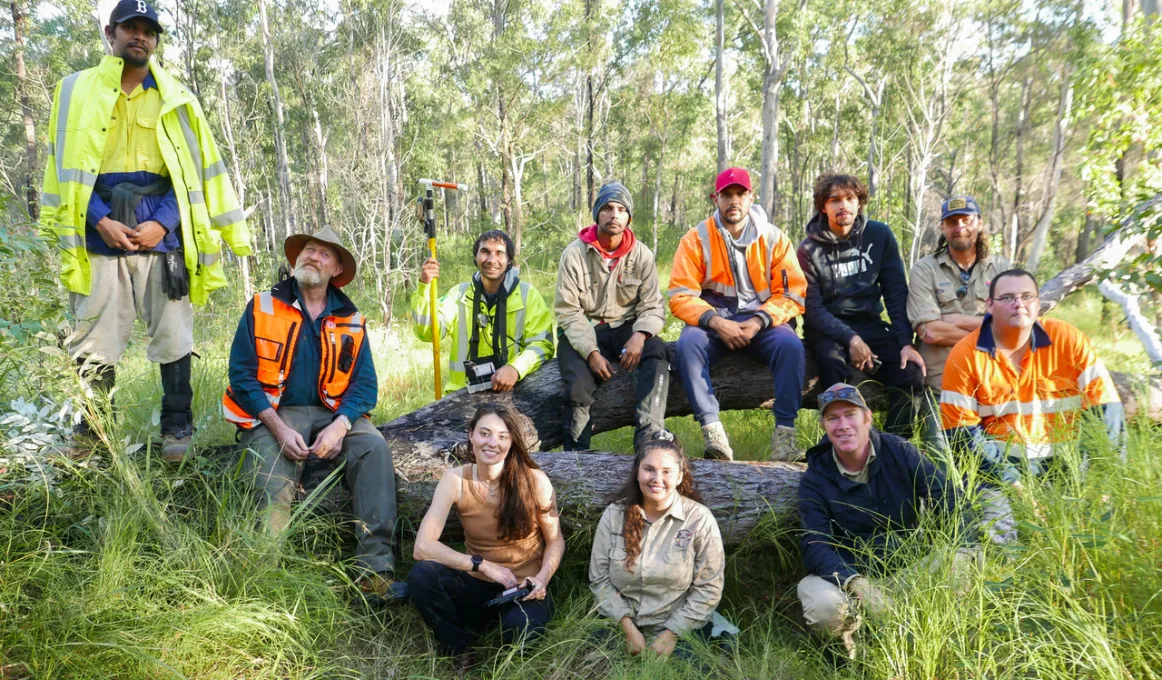From wetlands to a dairy farm and back

In December 2021, the Bandjalang Community celebrated the 10th anniversary of the creation of the Minyumai IPA and the changes they are making to restore their traditional land to its original state.
On 16 April 1999, a 2000 hectare property in Northern NSW which had been a dairy farm and logging operation was handed back to the Bandjalang people.
Twelve years later, the property was declared an Indigenous Protected Area (IPA) and this past December 20th, the Minyumai Land Holding Aboriginal Corporation (MLHAC) held a celebration to mark the 10th anniversary of the Minyumai IPA declaration.
During those 10 years, IPA Rangers have worked to restore the land to its original pre-farm state, a natural wetlands surrounded by wooded hills.
Ranger bush regeneration activities include cultural burning, wildlife monitoring, weed and feral animal control along with track and property maintenance.
Rangers have mapped over 142 large habitat trees to monitor and protect them from future wildfires and over 120 nest boxes have been installed in Minyumai and surrounding national parks to create new homes for threatened wildlife.
Managing an IPA and in particular, returning land to its original state is not a simple process nor just a matter of ‘letting nature take its course’.
Dewaynne Edwards is a MLHAC Ranger Supervisor.
‘The main thing was ensuring a robust IPA plan of management was developed in consultation with the Bandjalang community,’ Russell said.
‘Having freehold title in trust with the land management corporation was very helpful to ensure no other decision makers could come in.’
One of the main challenges was how to return cattle grazing pasture back into wetlands. A reverse in the process was required; namely filling in the drainage ditches which had, decades before, drained the wetlands.
To this end, the IPA partnered with Nature Glenelg Trust, an organisation expert in wetland restoration. The Trust gained a NSW Environment Trust grant allowing the IPA to properly make the change.
‘This will involve planning, mapping, realigning roads and other activities in preparation,’ Russell said.
‘Then in 2023, we will begin filling the channels dug to drain the wetland.’
The return of the wetlands means the return of many plant and animal species including water birds, frogs, insects, fresh water crustaceans and reptiles such as snakes and lizards.
It also means a return to the ancient landscape the Bandjalang people have cared for over thousands of years.
Find out more
Management of the Minyumai Indigenous Protected Area is supported by funding from the Australian Government’s Indigenous Protected Area Program, administered by the National Indigenous Australians Agency,
An Indigenous Protected Area is similar to other Australian reserves or national parks but owned and controlled by the local Aboriginal or Torres Strait Islander community. An IPA incorporates ‘a balance between conservation and other sustainable uses to deliver social, cultural and economic benefits for local Indigenous communities.’